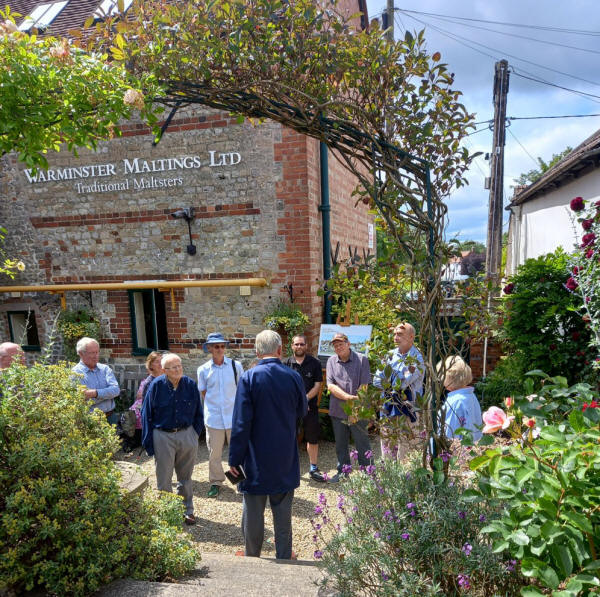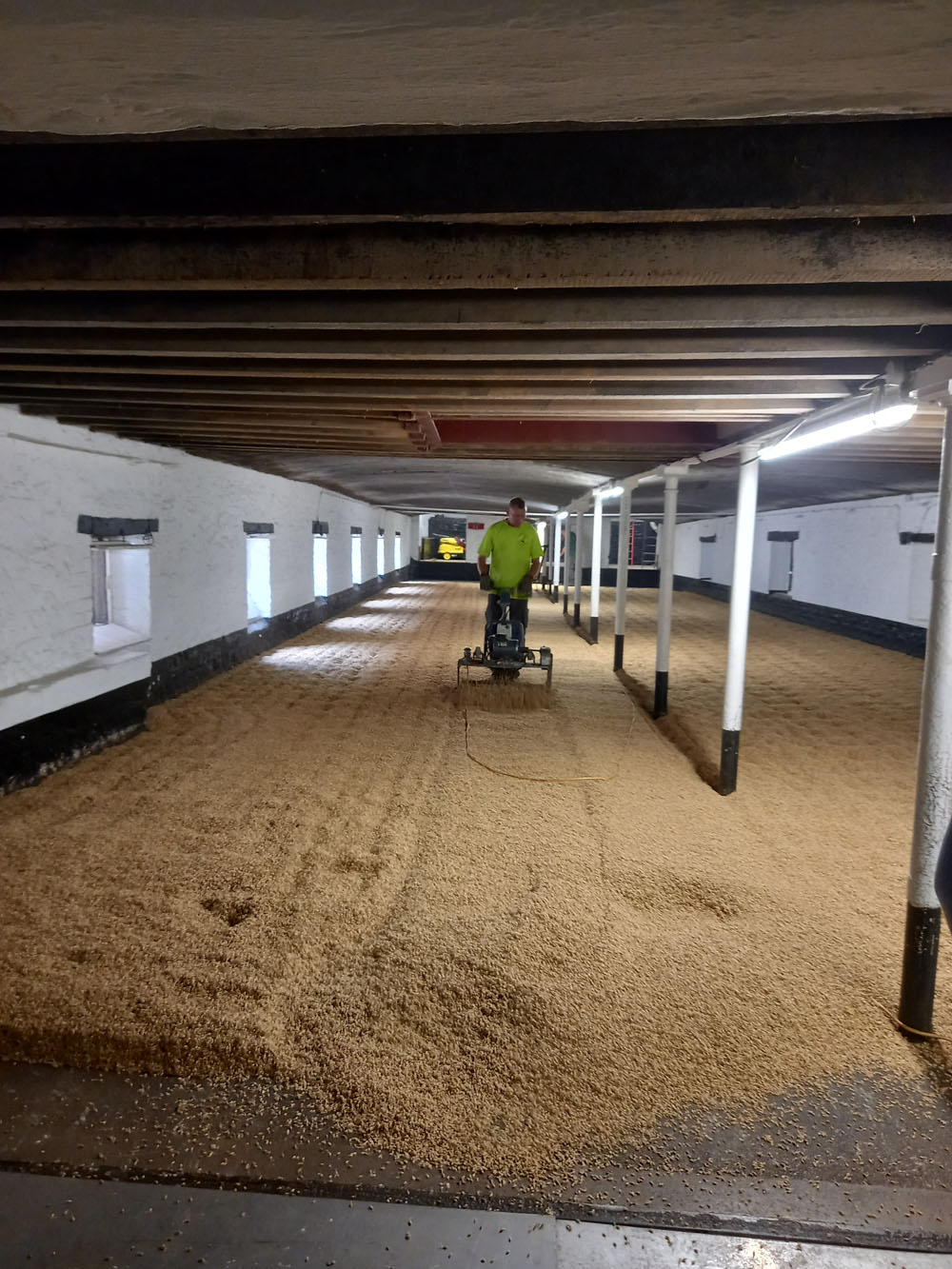|
   |
|
Page 3 |
Newsletter 138 Autumn 2022 © Hampshire Mills Group |
|
Warminster Maltings Visit
Eleanor Yates, photos by Carol Burdekin
|
|
Our member Robin Appel kindly invited members of HMG
to visit Warminster for a guided tour of the
Maltings. Sixteen of us enjoyed an interesting
afternoon which ended with a delicious cream tea in
the garden.
The Maltings was built more than 160 years ago just
as the other ‘floor’ maltings in the area were
closing. Robin, an independent grain trader selling
barley, bought the Maltings in 2001 and continues to
run it now.
Robin told us of the development of barley (Hordeum
vulgare), a grass and a major cereal grown globally
from as early as 10,000 years ago. Robin and his
predecessors at Warminster have selectively bred
modern strains of barley. 70% are used as animal
food and 30% as a source of fermentable material for
beer, whiskey, soups and stews, and in some types of
bread.
|
 |
|
 |
Barley, which grows in six-row, two-row, and
hull-less varieties, has wonderful names including
Golden Promise, Steptoe, Plumage Archer and Maris
Otter. This last is an English two-row winter
variety commonly used in the production of malt and
remains popular with craft and home brewers. A
statue of an otter forming part of a water feature
is in the Maltings garden. Craft brewers like to
use locally grown barley for environmental and other
reasons.
Barley grains are turned into malt in a traditional
and ancient process. Robin explained this process
before our guided tour. We then saw the various
stages in action as we walked around the building
beginning with the delivery of the 7 ton sacks of
barley. Like all grains barley is not always at the
correct moisture content for malting so it will be
dried to 14% and, most importantly, stored for about
6 weeks in dormancy. Then when malting starts the
grains will be steeped in several changes of water
to start germination. This is stopped by drying
when sprouting is seen and the correct enzymes for
sugars have been measured.
|
|
We
saw the drying floor where the grains were raked and
spread several times a day for about 4 days to
air-dry them and eliminate carbon dioxide.
The grains are then roasted in a kiln or oven to the
correct colour and specification for their future
job. They will then be dried and smoked again
before storage on upper floors before being sacked
for delivery to breweries. This is a labour
intensive job in a very warm building and the
malt-men need to work as a skilled team.
The tour ended with a much appreciated tea party.
We visitors had not done any work but admired the
hard labour we’d observed. On our behalf Ashok
thanked Robin very much for the extremely
interesting tour.
|
 |
| |
|
|
